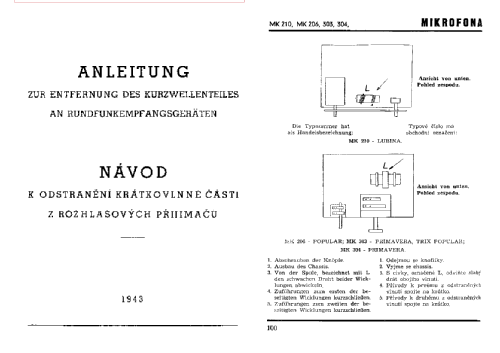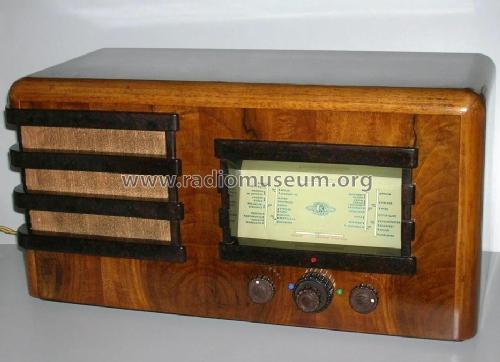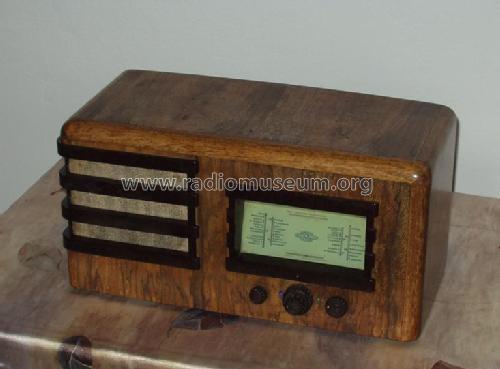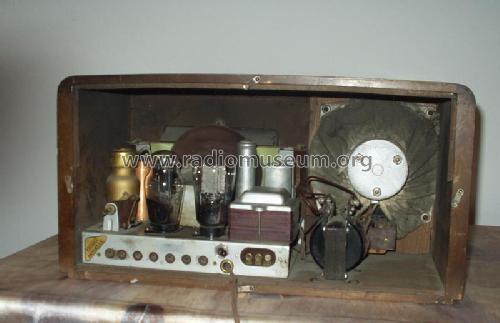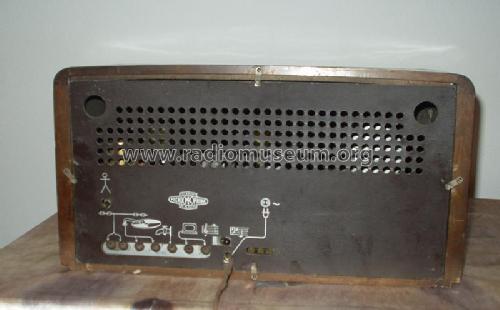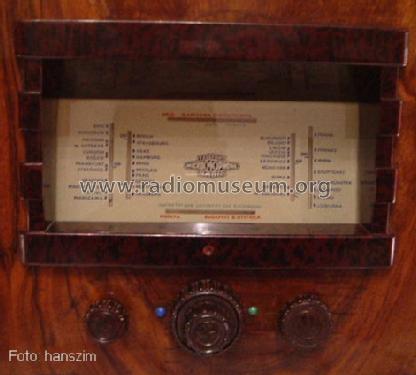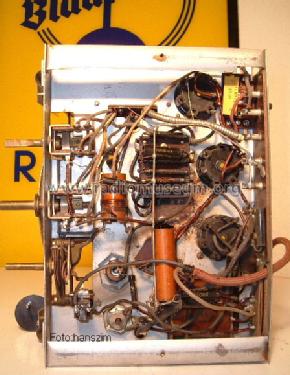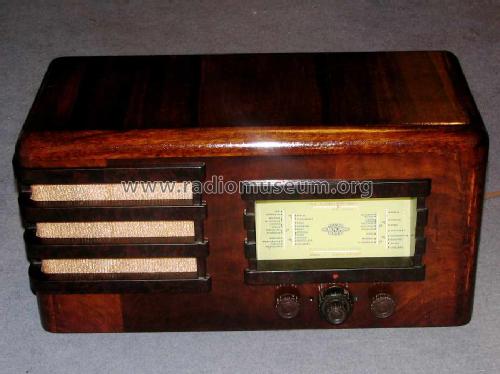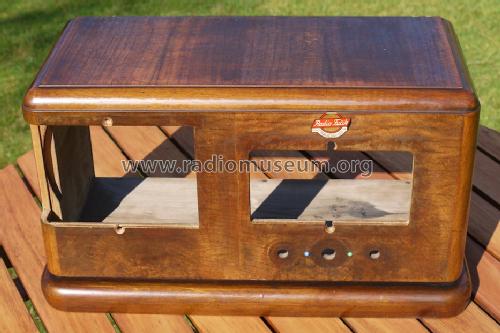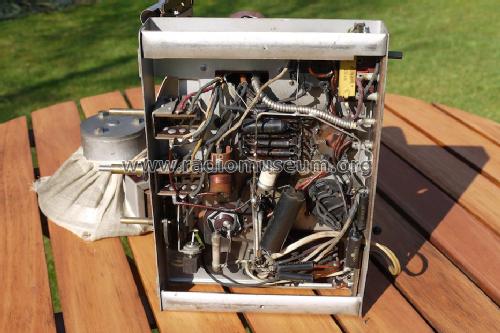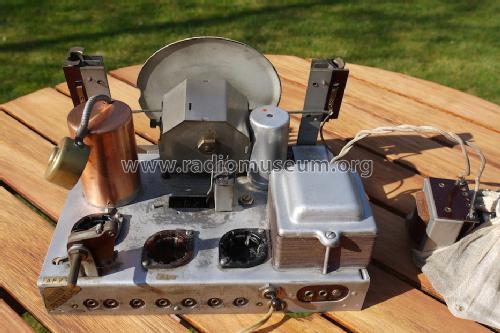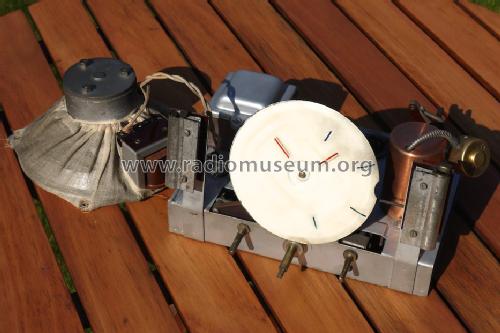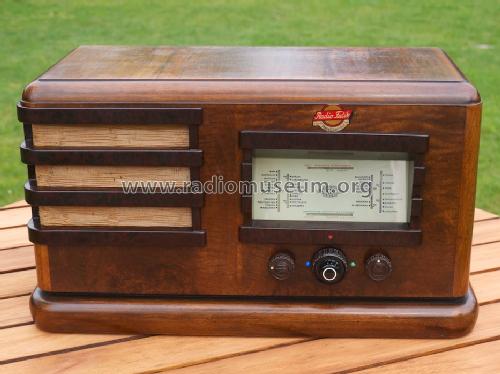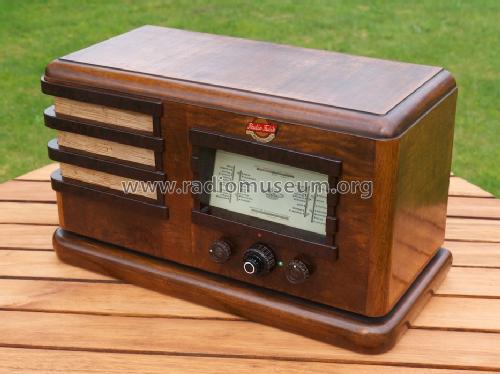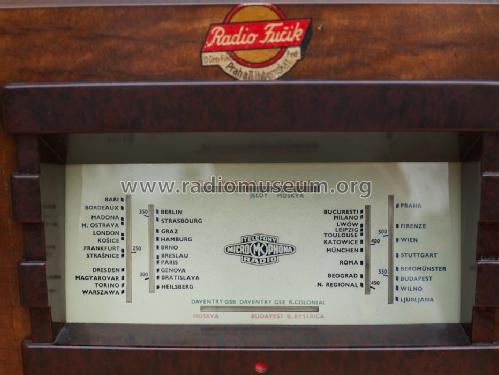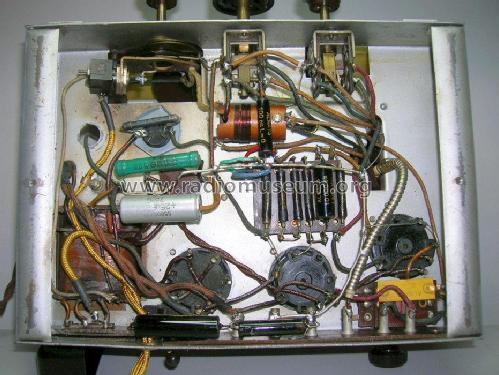Popular MK206
Microphona (Mikrofona), Bratri Knotkove, Praha-Strasnice
- Country
- Czechoslovakia
- Manufacturer / Brand
- Microphona (Mikrofona), Bratri Knotkove, Praha-Strasnice
- Year
- 1936/1937
- Category
- Broadcast Receiver - or past WW2 Tuner
- Radiomuseum.org ID
- 23095
-
- alternative name: Telefony Microfona
Click on the schematic thumbnail to request the schematic as a free document.
- Number of Tubes
- 3
- Main principle
- TRF with regeneration; 1 AF stage(s)
- Tuned circuits
- 1 AM circuit(s)
- Wave bands
- Broadcast, Long Wave and Short Wave.
- Power type and voltage
- Alternating Current supply (AC) / 120; 150; 220 Volt
- Loudspeaker
- Permanent Magnet Dynamic (PDyn) Loudspeaker (moving coil) / Ø 17 cm = 6.7 inch
- Material
- Wooden case
- from Radiomuseum.org
- Model: Popular MK206 - Microphona Mikrofona, Bratri
- Shape
- Tablemodel, low profile (big size).
- Dimensions (WHD)
- 470 x 240 x 210 mm / 18.5 x 9.4 x 8.3 inch
- Notes
-
36W Verbrauch
Dial lamps: 2x 6V/0,3A.
- Net weight (2.2 lb = 1 kg)
- 8 kg / 17 lb 9.9 oz (17.621 lb)
- Price in first year of sale
- 885.00 Kc
- External source of data
- Erb
- Source of data
- Ceskoslovenske prijimace 1933-1945, Baudys 1947
- Other Models
-
Here you find 69 models, 52 with images and 45 with schematics for wireless sets etc. In French: TSF for Télégraphie sans fil.
All listed radios etc. from Microphona (Mikrofona), Bratri Knotkove, Praha-Strasnice
Collections
The model Popular is part of the collections of the following members.
Forum contributions about this model: Microphona Mikrofona: Popular MK206
Threads: 1 | Posts: 1
Spielt. Linker Knopf dient zur Einstellung der Rückkopplung. Vorderer mittlerer Knopf ist der Wellenschalter für 2 x Mittelwelle und 2 x Langwelle. Simpler Antrieb Skalenanzeige wie beim Volksempfänger mittels hinteren großen Knopf. Der rechte Knopf ist für die Trennschärfeneinstellung mittels dreifacher Stufenschaltung. Rückseite: Anschlüsse für Plattenspieler und Lautsprecher. Umschalter für "hell" und "dunkel" - Ton. Links Knopf zur Antennenanpassung.
Reinhard Hanschke, 06.Jan.06


